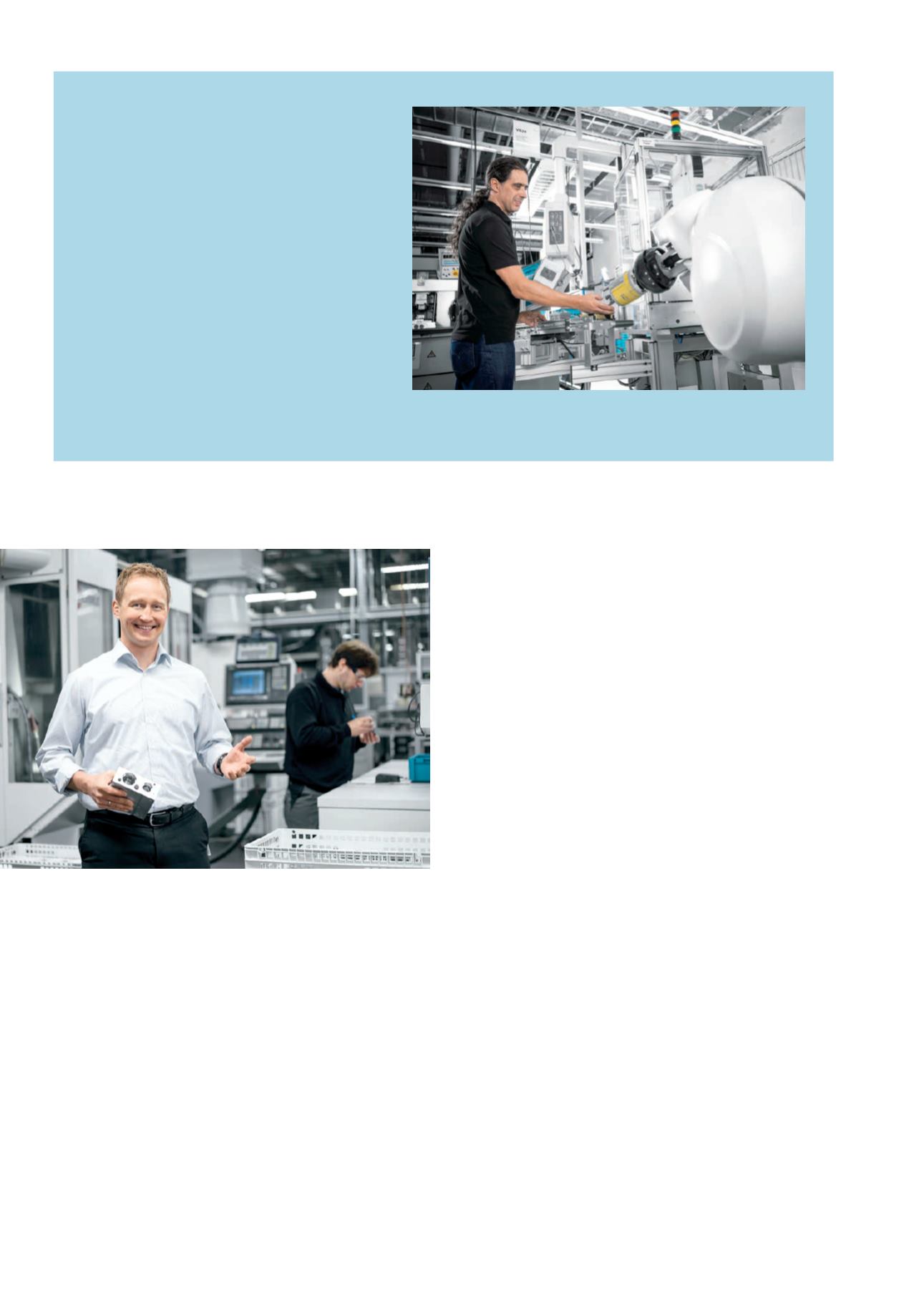

Human-machine interaction
Many of the aspects of Industry 4.0 – such as
human-machine interaction – are already a reality
in the Scharnhausen Technology Plant. The
assembly robot grips housings, joins cartridges
and frames together and passes the component on
to a worker for further processing. Such teamwork
poses no risk for the individual. Sensors
continuously monitor all the robot’s actions. It
does this thanks to a specially developed plastic
“skin” fitted with highly sensitive sensors. As soon
as an employee comes too close to it, the robot
slows down or just stops. Thanks to effective
safety mechanisms, the robot does not have to be
behind bars.
“The Scharnhausen Technology
Plant has flexible, highly
automated and energy-efficient
production processes.”
Stefan Schwerdtle, Head of the Global Production Centre Scharnhausen
An employee works
with the assembly robot
in an intuitive and safe manner.
valves from the VUVG series. Here, eight
production cells spread over 30 metres
operate in sequence. Several million
valves can be assembled annually, with
cycle times of less than 15 seconds. Many
of the company’s own products and
solutions are used here. In other words,
Festo products are used to manufacture
Festo products. Each line produces over
50 individual variations of different sizes,
with 20 variations making up over 80 per
cent of the total volume.
Manual work is still required when it comes
to assembling the valves into valve
terminals as well as for special solutions
and single components for individual
customer needs. Quantities vary from a
few thousand a year or a small batch of
several hundred to just a single item. For
some products, which have to be made
according to individual customer
specifications in a very short space of
time, there may be as many as 10
40
variations.
Electronics included
Many products simply wouldn’t exist
without electronics. In the Technology
Plant, 200 employees produce complex
electronic assemblies and products in an
area covering 6,000 square metres. 2.5
million of them are produced each year
for use by the company itself. The areas
responsible for further processing receive
either complete assemblies in their


















